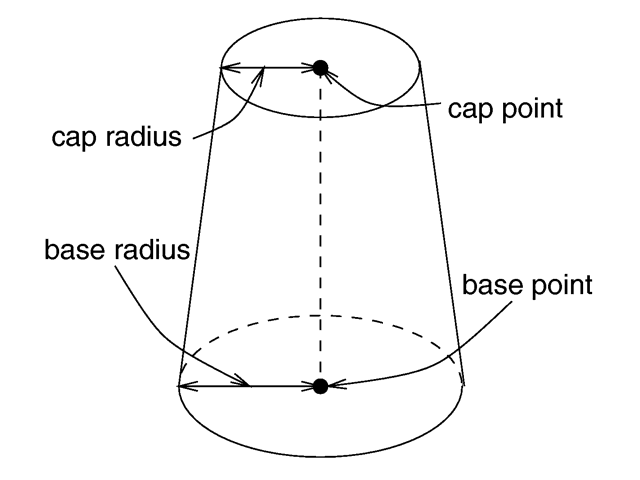Difference between revisions of "Reference:Cone"
Jump to navigation
Jump to search
Jholsenback (talk | contribs) m (1 revision: Initial Load (TF)) |
Jholsenback (talk | contribs) m (1 revision: link repair) |
||
| (2 intermediate revisions by the same user not shown) | |||
| Line 5: | Line 5: | ||
{{#indexentry:cone, open}} | {{#indexentry:cone, open}} | ||
{{#indexentry:keyword, open}} | {{#indexentry:keyword, open}} | ||
| − | |||
<p>The <code>cone</code> statement creates a finite length cone or a <em> | <p>The <code>cone</code> statement creates a finite length cone or a <em> | ||
frustum</em> (a cone with the point cut off). The syntax is:</p> | frustum</em> (a cone with the point cut off). The syntax is:</p> | ||
Latest revision as of 19:27, 23 July 2012
The cone statement creates a finite length cone or a
frustum (a cone with the point cut off). The syntax is:
CONE:
cone {
<Base_Point>, Base_Radius, <Cap_Point>, Cap_Radius
[ open ][OBJECT_MODIFIERS...]
}
|
The geometry of a cone. |
Where <Base_Point> and <
Cap_Point> are vectors defining the x, y, z coordinates of the
center of the cone's base and cap and Base_Radius
and Cap_Radius are float values for the corresponding
radii.
Normally the ends of a cone are closed by flat discs that are parallel to
each other and perpendicular to the length of the cone. Adding the optional
keyword open after Cap_Radius will remove
the end caps and results in a tapered hollow tube like a megaphone or
funnel.
